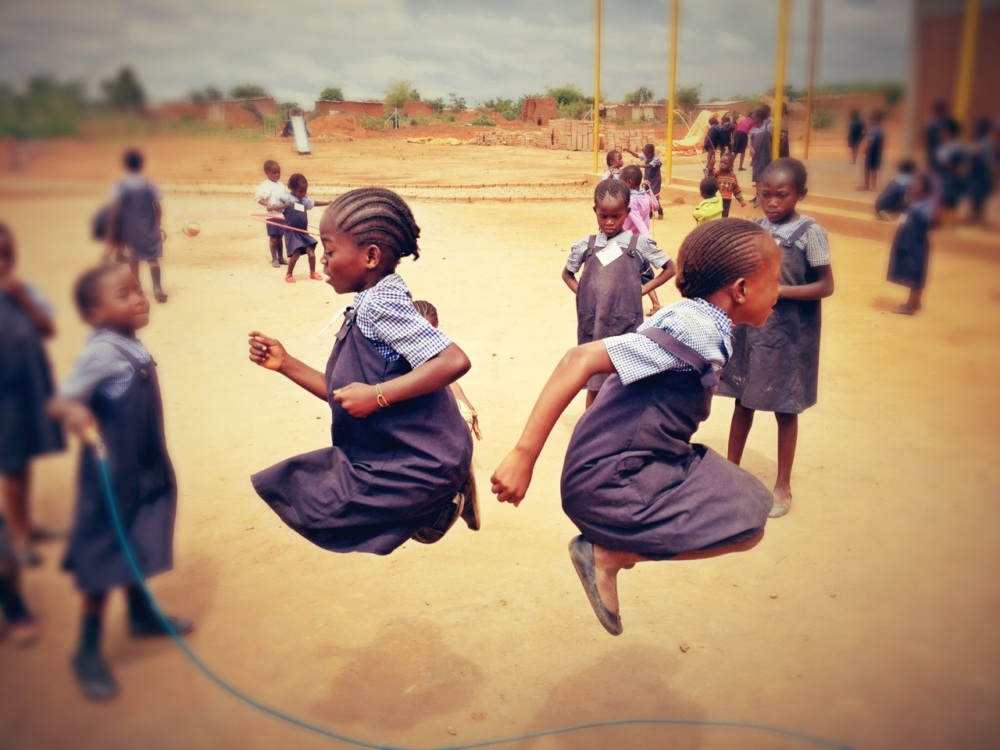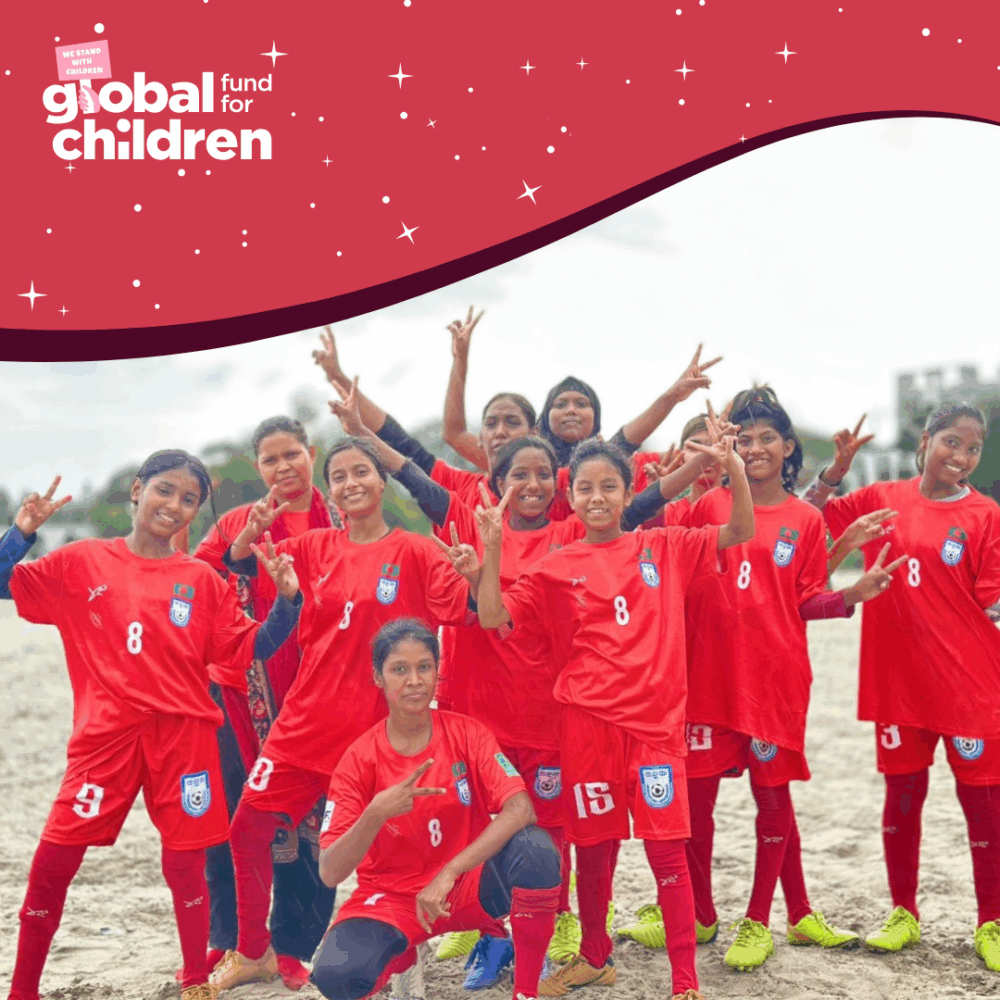In partnership with the Children’s Investment Fund Foundation (CIFF), Global Fund for Children (GFC) has a unique opportunity to shift this dynamic in relation to the First Global Ministerial Conference on Ending Violence Against Children in Bogotá, Colombia, from November 7-8, 2024.
The Ministerial Conference represents a unique opportunity to bring violence against children to the forefront of the international agenda and build solidarity across children’s rights, violence against children (VAC) and gender-based violence (GBV) movements to create shared goals and commitments through transnational connections.
GFC created an Advisory Group of 8-12 individuals to help inform the following actions:
- Strengthen connections between grassroots organizations, networks and groups working on violence against children and gender based violence;
- Increase opportunities for child and youth survivors to engage in and influence public campaigning and messaging around the Ministerial Conference; and
- Create space for longer term action to translate commitments made at the Ministerial Conference into action at the grassroots level.
The Advisory group is made up of GFC community-based partner representatives, GFC Youth Leadership Council members, and two program participants who attended the 2024 Adolescent Girls Summit in West Africa.
A rich body of evidence demonstrates the critical interrelation between gender-based violence (GBV) and violence against children (VAC). These issues are interconnected and mutually reinforcing, and intersect with other forms of systemic oppression that disproportionately impact vulnerable populations, particularly women, girls, and gender nonconforming individuals from marginalized groups (UN Women, 2021; UNICEF, 2020).
Understanding the close relationship between VAC and GBV, and investing in their intersections, is vital for truly understanding the complexities of children and young people’s lives and their experiences of violence. Key opportunities include:
- Applying a holistic approach to prevention of violence: Integrating both agendas results in a comprehensive understanding of their interconnections, leading to more effective prevention and intervention strategies.
- Joint resource allocation: Combining efforts can enhance resource allocation and the sharing of expertise between organizations and stakeholders.
- Increased advocacy power: A unified agenda can amplify advocacy efforts, making it easier to influence policy and secure funding.
- Enhanced and intersectional support systems: Addressing both forms of violence together can create more inclusive and comprehensive support systems, leading to improved outcomes.
- Developing strategies that are culturally sensitive and context-specific : Developing strategies that are context-specific and culturally sensitive is crucial for effective intervention.
Despite ongoing efforts to address these issues, VAC and GBV often remain hidden due to stigma, silence, and a lack of platforms for survivors and affected communities to share their experiences. Children, youth and marginalized groups are uniquely positioned to highlight these realities of VAC and GBV and advocate for the urgent changes that are needed in their different contexts.
Key messages:
Message 1: Research on Domestic Violence and Children’s Rights, Especially in Rural Areas
What: Invest in community-led research on domestic violence and children’s rights, focusing on rural and suburban areas to address critical gaps in knowledge, programmes, and policies. A comprehensive approach is needed that embraces diversity and considers the unique experiences of Indigenous peoples, Afro-descendant communities, people of all genders, and marginalized groups.
How:
- Secure funding from donors for community-led, participatory research initiatives.
- Collaborate with academic and community organizations to conduct studies that engage local voices and perspectives, building on already existing ones.
- Utilize research findings to inform and shape targeted policies and support services for affected communities.
Message 2: Universal access to healthcare & investment in health infrastructure & tech solutions
What: Ensure universal access to healthcare by investing in health infrastructure, including digital solutions, to provide quality care for everyone, regardless of location or socioeconomic status. This is especially crucial for survivors of VAC and GBV, who require dignified access to comprehensive care tailored to their specific needs. Within this approach, it is important to respect the traditional healing practices of indigenous communities.
How:
- Enhance digital literacy and support digital health innovation to modernize health systems and eliminate barriers to care
- Foster youth entrepreneurship through funding, mentorship, and partnerships with healthcare and tech organizations to develop innovative solutions for health challenges affecting children, particularly survivors of VAC and GBV.
- Invest in digital platforms that provide young people, especially survivors of VAC and GBV, with safe and confidential spaces for counseling and therapy.
Message 3: Implement Child Protection Policies in Schools to Prevent Abuse and Promote Safety
What: Implement comprehensive child protection and safeguarding policies in all schools, including protocols for handling abuse disclosures and educating teachers, students, and caregivers about personal safety to prevent Child Sexual Abuse (CSA).
How:
- Integrate child protection and personal safety into the school curriculum to empower students and inform parents and caregivers, while providing educators with training on recognizing, preventing, and responding to CSA effectively.
- Establish mental health counselors in schools and universities to support the emotional well-being of children and young people, particularly survivors of VAC and GBV.
- Strengthen coordination between law enforcement and schools to create efficient reporting processes and establish safe environments for children.
- Develop and enforce adherence to child protection policies and systems for prevention and intervention of Child Sexual Abuse
Message 4: Protect Vulnerable Migrant Children from Trafficking and Exploitation
What: Safeguard vulnerable migrant children and youth, especially those at borders, from trafficking and exploitation arising from their precarious situations. These children and youth face significant risks of GBV and VAC, with girls particularly at risk of sexual violence and boys vulnerable to coercion into exploitative labor or gangs. The trauma of displacement can severely impact their mental health and well-being.
How:
- Fund and support community-based organizations to implement targeted interventions for migrant children, focusing on preventing and responding to VAC and GBV.
- Address the unique needs of children at different stages of mobility – origin, transit, and return – by developing context-specific strategies that prioritize their protection and mental health, particularly regarding the risks of GBV and VAC during transitions.
Message 5: Fund and Support Young People and Youth-Led Groups to Address GBV and VAC
What: Provide funding and support to young people and youth-led groups and organizations to address GBV and VAC.
How:
- Offer flexible, multi-year core grants directly to young activists and both formal and informal child/youth-led groups and organizations to tackle issues that impact them.
- Provide additional support and accompaniment, such as capacity-building in monitoring, evaluation, and learning, to strengthen youth-led initiatives addressing GBV and VAC.
Message 6: Integrate Comprehensive Sexuality Education (CSE) in Schools and Communities to Prevent GBV
What: Introduce mandatory CSE in school curricula and community programmes as a strategy to prevent GBV
How:
- Train educators to effectively deliver age-appropriate CSE, covering topics such as consent, healthy masculinity, recognizing and addressing school-related GBV, and menstrual hygiene management to help girls feel safe, confident, and included.
- Support and train parents, community members, religious leaders and other key stakeholders to champion and deliver CSE within their communities.
Message 7: Enhance Legal Support for GBV Survivors to Ensure Justice and Protection
What: Increase legal support for GBV survivors by providing legal aid, representation, and training for law enforcement to ensure access to trauma informed justice and protection.
How:
- Raise awareness of GBV reporting mechanisms in communities.
- Create laws focused on the protection and safeguarding of children, with special care to avoid re-victimizing them.
- Establish child-friendly courts and justice systems with confidential, trauma-informed processes for reporting and seeking justice.
- Equip health, social workers, and justice officers with skills for trauma-informed care and legal response strategies.
- Create independent monitoring bodies to ensure effective implementation of child protection and anti-GBV laws, holding perpetrators accountable.
Message 8: Ensure Access to Leadership Development for Children and Youth to Prevent Violence
What: Ensure that all children and youth, particularly those vulnerable to violence, have access to leadership development programmes and extracurricular activities that empower them to advocate for their rights and safety.
How:
- Provide equal opportunities for children and youth to develop advocacy skills, particularly in violence prevention.
- Create mentorship programmes that connect vulnerable children and youth with leadership role models to promote safety and resilience within their communities.
Message 9: Address Climate Change Impact in Schools to End GBV
What: Address the effects of climate change in schools, specifically focusing on how environmental challenges can lead to increased violence and aggression against girls.
How:
- Implement education programmes in schools that highlight the connection between climate change and GBV.
- Encourage children and youth to engage in climate action by providing incentives that promote their involvement in creating a safer and more sustainable environment.
Message 10: Invest in Digital Platforms to Promote Education and Collaboration on Children's Rights
What: Invest in developing digital platforms that promote education and collaboration on children’s rights issues, fostering intercultural and international relationships among schools.
How:
- Create user-friendly digital platforms that enable schools to share resources and collaborate on children’s rights initiatives.
- Provide training for educators on effectively using these tools to engage students in meaningful discussions about children’s rights.
Message 11: Safeguard Digital Rights and Address Online Gender-Based Violence
What: Promote online safety and protect the digital rights of children and young people.
How:
- Raise awareness of online GBV and enhance social media literacy and education on digital safety in collaboration with young people.
- Implement policies and laws aimed at improving digital safety and safeguarding the digital rights of children and young people.


